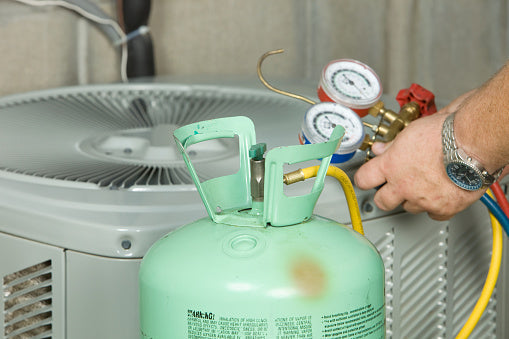R32 vs R410a: Which Refrigerant Is Better?
Table of Contents
- What is an AC Refrigerant?
- R32 vs R410a: Role of Refrigerants
- Types of Refrigerants and Their Brief History
- Get to Know More About R410A
- Get to Know More About R32
- R32 vs R410a: Comparison
- Give Importance to Refrigerants
- Conclusion
As if choosing a new air conditioner wasn't difficult enough, we now have to choose between two different refrigerants—R410A and the newer R32.

"Refrigerant" refers to various gases used as cooling agents in aircon units. These gases are insoluble in water and can travel far into the atmosphere.
We distinguish between refrigerants based on:
- Environmental impact
- Chemical structure
- Type of device that uses them
R32 and R410A both have a zero ODP (ozone depletion potential), making them relatively environmentally friendly. However, in this article, we’ll dive deeper into their differences to determine which is better.
What is an AC Refrigerant?
Refrigerants power refrigeration, air conditioning, and freezing systems. They absorb heat from the environment and produce cool air when combined with components like compressors and evaporators.
These substances cycle through gas and liquid states in copper coils. The refrigerant absorbs indoor heat, becomes a gas, and releases the heat outside. Then, it cools and repeats the process. 
Refrigerant Identifier R134a Mini ID
R32 vs R410a: Role of Refrigerants
Refrigerants are essential to air conditioners and fridges. Their job is to absorb heat inside the room and release it outside. This happens through repeated cycles in a closed system.
Role in Air Conditioners
The refrigerant absorbs room heat and evaporates into gas. A blower fan passes room air over cold coils filled with refrigerant. This cools the air and recirculates it.
The refrigerant gas is compressed, cooled again in the condenser, and turned back into a liquid through an expansion valve—ready to repeat the cycle.
Types of Refrigerants and Their Brief History
R12
R12 was a CFC contributing heavily to ozone depletion. Banned globally, production ended in 1994.
R22
An HCFC and slightly less harmful than R12, R22 was phased out in the US by 2020 under the Clean Air Act.
R410A
R410A is an HFC refrigerant with a GWP of 2,090 and an ODP of zero. It replaced R22 in many countries and became the standard for new aircon systems.
R32
R32 is a more eco-conscious HFC refrigerant with a GWP of 675 and zero ODP. Many manufacturers have begun adopting it due to better efficiency and lower emissions.

Inficon TEK-Mate Refrigerant Leak Detector
Get to Know More About R410A
R410A, developed in 1991, became the standard in air conditioning after R22’s phase-out. It operates at higher pressures and is chlorine-free, with zero ODP. However, it has a high GWP of 2088.
Get to Know More About R32
R32 (difluoromethane) is a single-component HFC with better heat transfer and lower GWP. It's classified as A2, meaning mildly flammable. Used widely in Asia, it forms part of the R410A blend as well.
R32 vs R410a: Comparison

Tif Digital Refrigerant Scale 100kg Capacity
Chemistry
R32 is pure difluoromethane, while R410A is a mix. R32 is easier to handle and requires less gas for the same effect due to its lower density.
Global Warming and Climate Change
R410A has a GWP of 2088. R32 only has 675. That makes R32 significantly better for reducing climate impact.
Ozone Layer Effect
Both R410A and R32 have zero ODP—meaning they don’t deplete the ozone layer.
Give Importance to Refrigerants
Refrigerants have a direct impact on climate change. The Montreal Protocol helped phase out ozone-harming gases like CFCs and HCFCs. Today, HFCs like R410A and R32 are used as alternatives—though still with GWP concerns.

Conclusion
Between R410A and R32, R32 takes the lead. It’s easier to recycle, has a much lower GWP, and performs better in many systems. Many countries are planning to phase out R410A by 2025, and R32 could become the new standard.
However, safety concerns due to flammability still exist. Depending on your aircon system and installation, your final choice may vary—but the trend is clear: R32 is the next step toward greener cooling.

